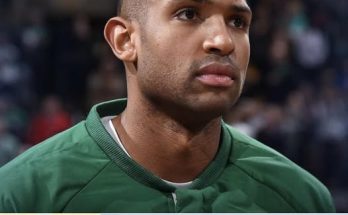In a surprising move that has sparked extensive debate within the college football community, Ohio State University has extended the contract of its defensive coordinator, Jim Knowles, with a substantial raise, despite the team’s underwhelming performance in the recent season. The new agreement elevates Knowles’ annual salary to $2.75 million, positioning him among the highest-paid coordinators in the nation.
Background: The Season in Review
The Ohio State Buckeyes entered the 2024 season with high expectations, boasting a roster laden with talent and aspirations for a national championship. However, the season unfolded disappointingly, with the team failing to secure a spot in the College Football Playoff and concluding with a record that fell short of preseason projections. Critiques were widespread, targeting both the offensive and defensive units for inconsistent performances and missed opportunities.
Jim Knowles’ Tenure and Performance
Jim Knowles was appointed as Ohio State’s defensive coordinator in January 2022, bringing with him a reputation for engineering formidable defenses during his tenure at Oklahoma State. His inaugural season with the Buckeyes showcased a marked improvement in defensive metrics, elevating the unit’s national standing. Despite the team’s overall struggles in the 2024 season, the defense under Knowles maintained respectable statistics, often keeping games within reach even as the offense faltered.
The Contract Extension: Details and Implications
The university’s decision to extend Knowles’ contract through January 31, 2027, includes a significant salary increase to $2.75 million per year. This move is particularly noteworthy as it makes Knowles one of the highest-paid defensive coordinators in college football, surpassing the $2.5 million annual salaries of peers such as Michigan’s Wink Martindale.
This extension reflects the administration’s confidence in Knowles’ strategic vision and leadership, despite the team’s recent shortcomings. It also underscores a broader trend in college football, where institutions are willing to invest heavily in top-tier coaching talent to build and sustain competitive programs.
Rationale Behind the Decision
Several factors may have influenced Ohio State’s decision to retain and reward Knowles:
-
Defensive Stability: Under Knowles’ guidance, the defense demonstrated resilience and adaptability, often compensating for offensive deficiencies. The administration likely views this stability as a foundation upon which to rebuild for future success.
-
Recruitment and Development: Knowles has been instrumental in recruiting high-caliber defensive talent and fostering their development. His continued presence ensures consistency in coaching philosophy and player progression.
-
Market Dynamics: The competitive landscape of college football coaching has escalated, with top coordinators commanding premium salaries. By securing Knowles with a lucrative extension, Ohio State aims to preempt potential poaching by rival programs seeking experienced defensive minds.
Criticism and Controversy
The decision to grant a substantial raise following a lackluster season has not been without controversy. Critics argue that rewarding a coordinator amid team underperformance sends a conflicting message about accountability. Some fans and analysts contend that the resources allocated to Knowles’ salary might have been better invested in addressing other areas of need within the program.
Moreover, this move raises questions about the broader implications of escalating coaching salaries in collegiate athletics, particularly concerning financial sustainability and the prioritization of resources.
Comparative Analysis: Coaching Salaries in College Football
The escalation of coaching salaries in college football has been a subject of ongoing debate. Head coaches like Georgia’s Kirby Smart and Clemson’s Dabo Swinney command annual compensations exceeding $11 million, reflecting the high stakes and substantial revenues associated with successful programs.
Defensive coordinators, while typically earning less than head coaches, have seen significant salary growth in recent years. The market for top-tier coordinators has become increasingly competitive, with programs willing to offer substantial financial incentives to attract and retain coaching talent capable of delivering championship-level performances.
The Road Ahead: Expectations and Challenges
With his contract extension, Jim Knowles faces heightened expectations to elevate Ohio State’s defense to elite status and contribute to the team’s pursuit of national titles. The upcoming seasons will serve as a critical evaluation period, where the administration, fans, and stakeholders will closely monitor the defense’s performance and the program’s overall trajectory.
Success will hinge on several factors, including effective recruitment, player development, strategic innovation, and the ability to adapt to the evolving dynamics of college football offenses. Knowles’ leadership and expertise will be pivotal in navigating these challenges and fulfilling the high expectations that accompany his enhanced role and compensation.
Conclusion
Ohio State University’s decision to extend Jim Knowles’ contract with a significant salary increase, despite a disappointing season, reflects a strategic bet on continuity and the potential for future success. While the move has sparked debate, it underscores the university’s commitment to investing in coaching talent as a cornerstone of its football program’s aspirations.
As the landscape of college football continues to evolve, such decisions highlight the complex considerations institutions must balance in their pursuit of excellence on the field. The effectiveness of this approach will ultimately be judged by the program’s performance in the seasons to come and its ability to meet the lofty expectations that define Ohio State football.


